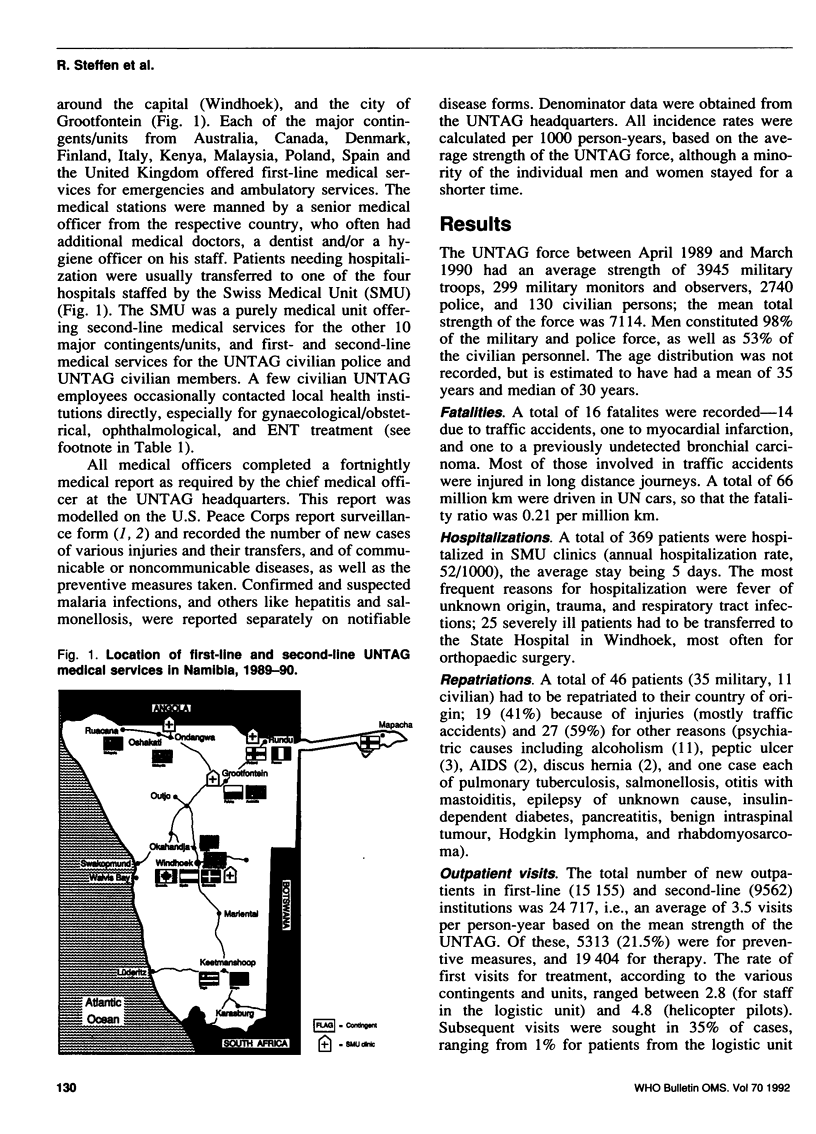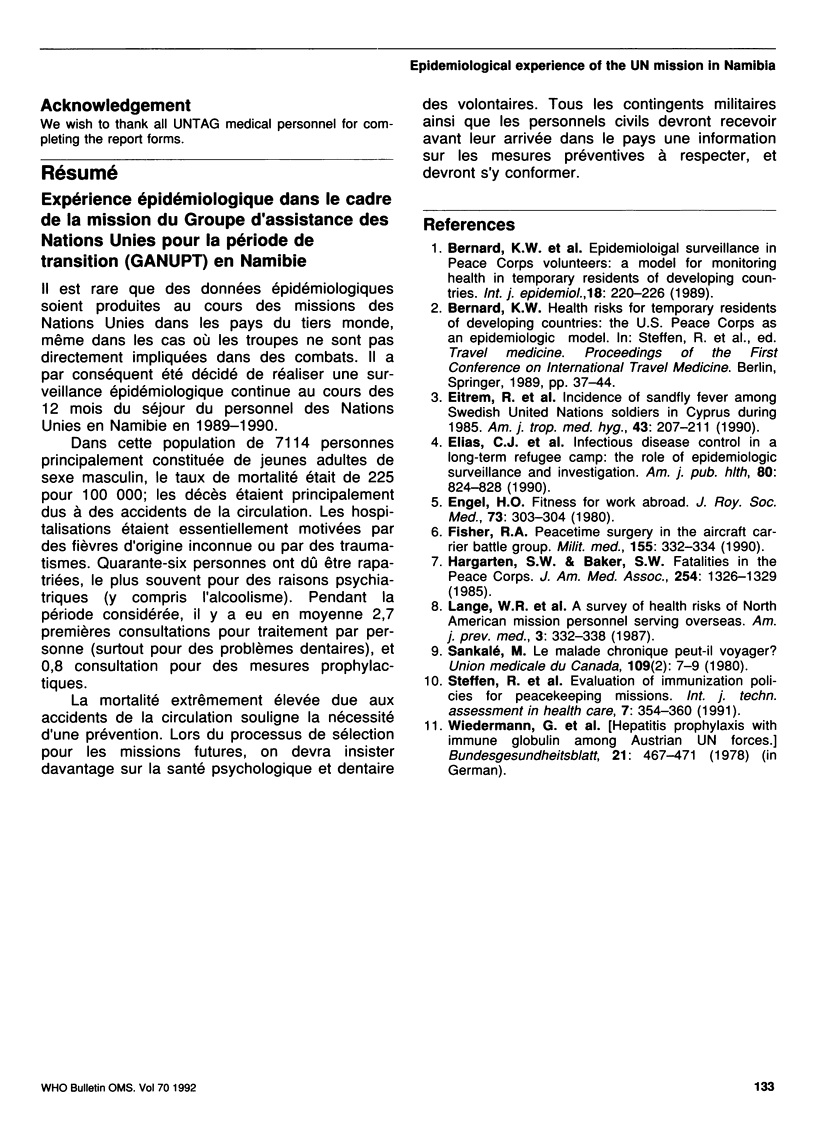Abstract
Epidemiological data have rarely been generated during United Nations (UN) missions to Third World countries, even in situations where there is hardly any combat involvement. Continuous surveillance was therefore carried out during the 12-month stay of UN personnel in Namibia in 1989-90. In this population of 7114 persons, mostly young men, the mortality rate was 255 per 100,000; death was mainly due to traffic accidents. Hospitalization was chiefly because of fever of unknown origin or trauma. Repatriation to the country of origin was necessary in 46 patients, frequently for psychiatric reasons including alcoholism. Over this one-year period there were, on average, 2.7 new consultations per person for treatment (mostly for dental problems), and 0.8 per person for prophylactic measures. The extremely high mortality due to traffic accidents indicates a need for prevention. In the selection process for future missions, more emphasis should be given to the psychological and dental health of volunteers. All military contingents and civilian groups should learn about effective preventive measures prior to their arrival, and adhere to them.
Full text
PDF




Selected References
These references are in PubMed. This may not be the complete list of references from this article.
- Bernard K. W., Graitcer P. L., van der Vlugt T., Moran J. S., Pulley K. M. Epidemiological surveillance in Peace Corps Volunteers: a model for monitoring health in temporary residents of developing countries. Int J Epidemiol. 1989 Mar;18(1):220–226. doi: 10.1093/ije/18.1.220. [DOI] [PubMed] [Google Scholar]
- Elias C. J., Alexander B. H., Sokly T. Infectious disease control in a long-term refugee camp: the role of epidemiologic surveillance and investigation. Am J Public Health. 1990 Jul;80(7):824–828. doi: 10.2105/ajph.80.7.824. [DOI] [PMC free article] [PubMed] [Google Scholar]
- Engel H. O. Fitness for work abroad. J R Soc Med. 1980 Apr;73(4):303–304. doi: 10.1177/014107688007300421. [DOI] [PMC free article] [PubMed] [Google Scholar]
- Fisher R. A., Dunn W. D. Peacetime surgery in the aircraft carrier battle group. Mil Med. 1990 Jul;155(7):332–334. [PubMed] [Google Scholar]
- Hargarten S. W., Baker S. P. Fatalities in the Peace Corps. A retrospective study: 1962 through 1983. JAMA. 1985 Sep 13;254(10):1326–1329. [PubMed] [Google Scholar]
- Steffen R., Woodall J. P., Nagel J., Desaules M. Evaluation of immunization policies for peacekeeping missions. Int J Technol Assess Health Care. 1991;7(3):354–360. doi: 10.1017/s0266462300005729. [DOI] [PubMed] [Google Scholar]


